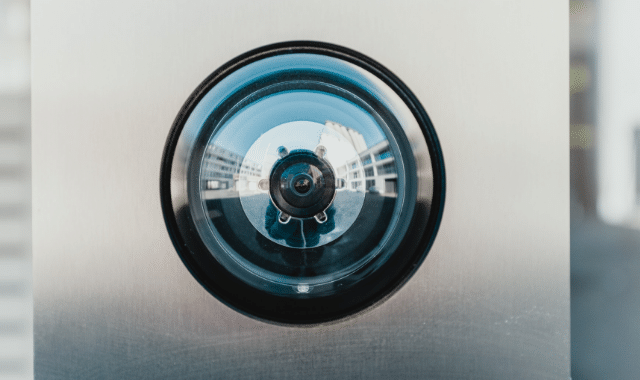The evolution and future of home security
Security systems have evolved from manual chimes to the first CCTV home security to today's optimised cameras with facial recognition and automatic face profiling.
Home security came from humble beginnings, with a door alarm made from chimes connected to the door lock in 1700s. Things moved quickly from here with the first electro-magnetic alarm system being invented by Augustus Russell Pope in USA in 1863. Up until this point, most people had relied on noise from startled animals and guard dogs or mechanical ringing to catch any intruders.
It was in 1942 that home security started to include CCTV, when German engineer Walter Bruch designed a system with integrated cameras and monitors. The technology was used for live monitoring V-2 rockets; but it was not possible to record footage. In 1969, Marie Van Brittan Brown patented the first CCTV home security with television surveillance system which became one of the most celebrated inventions of the 20th century.
Van Brittan-Brown envisioned her invention as a receiver resembling a small bedside television set, with a screen displaying a video picture of the visitor. A microphone and speaker made possible voice communication between the person in the home with the person at the door; one button could sound an alarm, while another button could open the door if the resident identified the visitor.
1969 security system designed and patented by Marie Van Brittan Brown. Source: Circle City Alarm
Since then, her invention laid the groundwork for every next development and improvement of security systems, including some recent ones in 2013. It was not until the 1990s that multiplexity solutions became available. It was then possible to combine video signals from a number of CCTV cameras that could be displayed on one single monitor.
Digital technology at the beginning of the 2000s allowed VCRs to be replaced with digital video recorders (DVRs). Piles of video tapes with stored footage were replaced with digital systems. More recently, network video recorders (NVR) started to be used to encode and process video in cameras and then streaming the footage to NVRs for storage or remote viewing.
CCTV and home security in 2018
Today’s high demand of CCTV systems for homes, businesses, and public spaces means security companies need to develop and adopt advanced features which are user-friendly and efficient.
According to a document published by the Parliament of Australia on measuring crime in Australia, crime places a heavy burden on the Australian economy. This means there is a need of a high annual expenditure to deal with this, as well as prevention. The Australian Institute of Criminology reportedly records over 200,000 annual break-ins.
According to the Australian Bureau of Statistics (ABS), the non-residential burglaries occurred in community areas, in retail, business areas, and other unspecified areas. There were 63,467 non-residential burglaries recorded by police annually. Of those, 70 percent were identified as actual break-ins whereas the remainder 30 percent were attempts.
Security companies in Australia are aware of how much burglaries affect the overall economy and general well-being of society and are working to combat this by producing cutting edge technology that allows individuals complete control over their home security.
Some of the best technology features in the latest security systems available in 2018 in Australia include monitored and unmonitored alarm systems, wireless and mobile features, and enhanced CCTV security technology.For instance, Vivint Smart Home system monitors and gives remote access to door locks, security cameras, and sensors. It also features a video doorbell. Users can monitor their home from their mobile phone and take action when the alarm is triggered. It has an opt-in subscription-based service that lets users get a response in case the alarm goes off.
The Telstra Smart Home system allows users to check doors and windows are shut via a smart phone app, and be notified if they’re being tampered with, plus users can answer their front door intercom via the smartphone when you’re elsewhere.Motion sensors using the system can alert users when their home has been entered, or video cameras to monitor things whilst away at work or on holidays.
A view into the future of home security
These technologies, which once belonged to science fiction, are being incorporated into the next generation of home security systems as well. These advancements include video doorbells that can see and record a person who steps in front of the door, or security cameras that include lights and alarms activated by motion sensors. A property with motion-activated lights and smart sensors that are connected to cameras in and outside the home take footage of a suspect in action, and cross-references the face with profiles to identify a person almost instantly.
Together with cameras with facial recognition software, a door-screening process that includes biometric authentication — such as retina scans and fingerprints — is also not far from becoming mainstream in home security systems. Upgrading CCTV systems according to these trends will give security companies a competitive edge for the future.
Credit: Susan Fourtané, Science and Technology Journalist
-
Stay up to date with the latest news and Security updates.
- Subscribe


